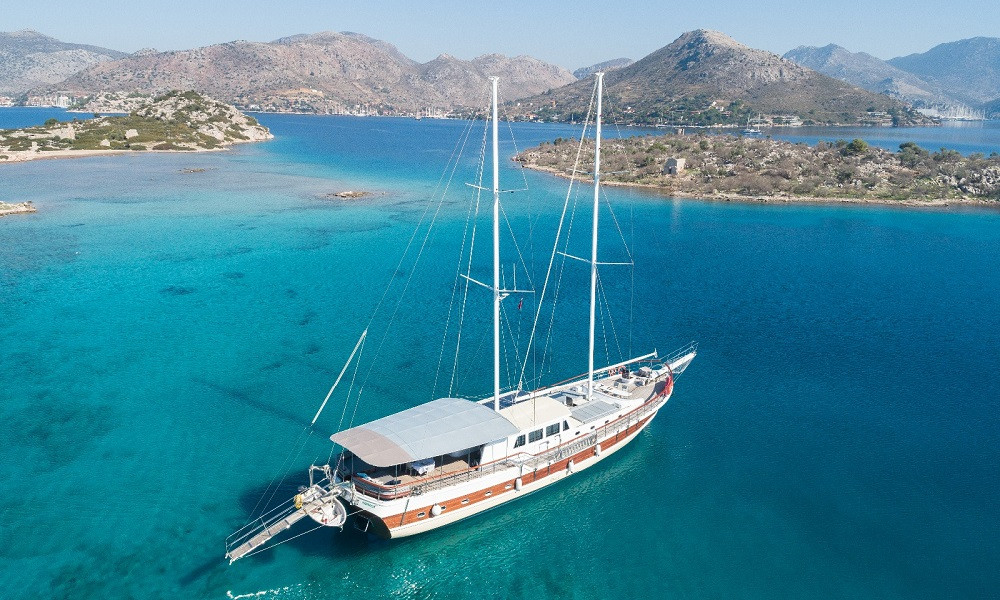The Ancient Zeugma City is located in Belkıs Village 10 km east from Nizip / Gaziantep, by the River Euphrates. Importance of this settlement which demonstrates an uninterrupted in presence since the prehistorical ages is that it is one of the two points allowing the easiest passage across the River Euphrates. “Zeugma” already stands for a term like “bridge head” or “passage location”. The city is an important trade centre of the Hellenistic Era. After the region started to be ruled by Rome, importance of the city increased upon the settlement of a military garrison called IVth Legion. Artistic activities increased and a cultural development is achieved in Zeugma parallel to progress in trade volume.
The first scientific study which proved that Zeugma is the same place as modern Belkıs, was published in 1917. The excavation studies in the Ancient City were started in 1992 under the management of the Gaziantep Museum Directorate of the Ministry of Culture, the General Directorate of Monuments and Museums. French archaeology team joined the studies from 1996. Number of villas found since 1992 reached 7. Over 1000 m² base mosaic have been found during the excavations performed up to now. During the studies in the region which will fall within the lake area, a Mars statue which is 1.55 m tall was found on May 03, 2000. Many frescos (wall picture), mosaics, small objects [seals belonging to the Roman administrative system, bronze coins, oil-lamps, marble statues] and ruins of architectural structures have been found during 1999 and 2000. Portable ones of those were moved to the Gaziantep
Museum Directorate.
During the excavations in 1992, an important base mosaic was found in a Roman villa, belonging to Dionysus, however 2/3 of it which was demonstrated in-situ was stolen in 1998. During the excavations in 1993, the terrace mosaics of Roman villas disappeared. The 2- figure panel of the mosaic found was cut and extracted as a result of illegal excavations and smuggled abroad 25-30 years ago. It was determined in 1994 that the works are in the Houston Menil Collection, and agreement was reached as a result of mutual negotiations, and the mosaics were returned to our country in the second half of June.
Either the Gaziantep Governorship Province Private Administration or the Birecik Dam Consortium provided financial contribution to the studies performed, in addition to the resources of the Ministry of Culture.
The archaeological rescue and documentation studies in 2000, will be carried out under the management of the Ministry of Culture and coordination of SAP, with participation of the Prime Ministry, the South Anatolian Project Regional Development Administration (SAP-RDA), the Packard Humanities Institute (PHI), the Birecik Dam and Hep Installation and Operation Co. Inc, an agreement record was signed between SAP Administration and PHI on June 07, 2000 to carry out urgent archaeological rescue studies in the Ancient Zeugma City and SAP region. According to this agreement record, PHI has undertaken to finance the studies up to USD 5 millions.
The points having archaeological importance in Zeugma are handled in three sections:
Area A:
A lower terrace which will fall under water in June 2000,
Area B:
Other sections which will fall under water in October 2000.
The archaeological rescue and the documentation studies in the areas A and B which are to fall under water and less than 1/3 part of Ancient Zeugma City will remain, are being carried out by an extensive team formed by Turkish, French, American, Australian, Austrian and English (the Oxford Archaeological Unit) archaeologists, managed by the Ministry of Culture, the General Directorate of Monuments and Museums, the Gaziantep Museum Directorate.
Area C:
As regards the studies to be carried out in this section which is larger than the sum of the areas A and B, and will not fall under water, the Ministry of Culture, the General Directorate of Monuments and Museum, the SAP Administration and the PHI have reached a principal agreement, and a detailed program is being studied. In this area, a long term excavations, restoration and conservation of movable and immovable works, development of an open archaeological stand, as well as construction of a museum are contemplated, and expropriation operations are foreseen to be included to realize them. Mr. M. İstemihan TALAY, the Minister of Culture attempted for expropriation of the site at the highest level. On the other hand, it was stated that the PHI is also ready to assign funds for expropriation, upon agreement.
As can be seen, various self-sacrificing studies were carried out in different fields in Ancient Zeugma City for a long time. However, a wrong impression was established among the public that the studies in Zeugma were first started in 2000. Our Ministry endeavours to keep the public informed correctly on this subject.



